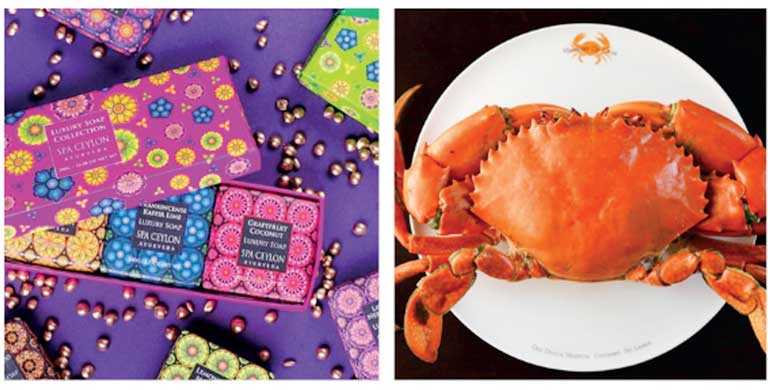Tuesday Mar 18, 2025
Tuesday Mar 18, 2025
Thursday, 21 February 2019 01:06 - - {{hitsCtrl.values.hits}}

A country’s economic prosperity is associated with the ownership of powerful global brands. Look at the world’s most valuable brands and see who owns them. Many companies headquartered in the USA: Apple, Google, Amazon, Microsoft, Coca-Cola, Disney are just a few. Japan with Honda, Toyota, Mitsubishi; Korea with Samsung, Hyundai and the list can go on and on.
There is no doubt that a country’s economic and commercial success is linked to the brands that the country owns and its ability to successfully reach customers across the world. For an island nation such as ours, developing global brands with an export focus is vital for economic sustainability.
 With a small population base and limited disposable income, local market categories (with some exceptions) do not offer significant scalability. Those sectors which do offer scale are already well consolidated with established brands. Gaining share requires significant investment over a sustained period to make headway in these markets. Such investments are also unlikely to pay off, due to the limited market size. In this conundrum, two options beckon. One is to go niche with a premium up-market strategy or to go global where there are bigger market opportunities.
With a small population base and limited disposable income, local market categories (with some exceptions) do not offer significant scalability. Those sectors which do offer scale are already well consolidated with established brands. Gaining share requires significant investment over a sustained period to make headway in these markets. Such investments are also unlikely to pay off, due to the limited market size. In this conundrum, two options beckon. One is to go niche with a premium up-market strategy or to go global where there are bigger market opportunities.
We have recently seen two brands take exactly this approach, by first gaining a foothold in Sri Lanka and then successfully going global. This route enables testing and refining the product before investing in international expansion, thereby significantly reducing the risk of failure.
The two brands are Spa Ceylon and Ministry of Crab. Whilst these businesses are tiny in scale, its worth taking a deeper look as to how they have evolved and succeeded and the lessons we can learn, for others to follow.
A notable factor that these entrepreneurs have embarked on is developing a “brand” right from the outset. They have also adopted an approach of anchoring their brand to a Sri Lankan context which has given them tremendous leverage as they have gone global. This is an indication that there is perceived value internationally to a well presented Sri Lankan brand.
Entrepreneurs who are considering ventures should be looking at leveraging this important “country of origin” advantage as they think through opportunities, since it provides an important differentiator in building a global brand.
The Spa Ceylon brand
The origins of the Spa Ceylon brand goes back to the core opportunity that it identified, which was to provide luxury Ayurveda products to the Colombo based urban customers. To do so, it put emphasis not on the product (which is what everyone else was doing at that time) but on the design, packaging and retail experience.
Ayurveda products which were widely available in Sri Lanka were well known to come in shoddy packaging often with leaking products, sold at low prices from dusty shelves in small boutiques across the country. It is to this market that Spa Ceylon entered, by making available their products in sleek modern packaging in a few beautifully scented merchandised stores, resplendent in sophisticated colours and design at premium prices.
The brand took off as it catered to the affluent Colombo upmarket customer who was attuned to buying natural products, but would never have considered many of the available Ayurveda or natural formula brands, because of their presentation and where it was being made available. Price was not a barrier to them.
The Spa Ceylon brand captures the romance of old Ceylon combined with ancient Ayurveda wisdom to create their range of majestic spa rituals and royal spa formulae designed to soothe, calm and relax the body, mind and soul. They produce over 450 all-natural Ayurveda inspired personal care, wellness and home aroma products amongst others. Luxury personal care Ayurveda is the space that they operate in and have carved out exclusively for themselves, making anyone else who moves into the same territory as a me-too copycat.
They have achieved global presence with more than 70 branded stores and spas situated in Ginza Tokyo, Melbourne, Singapore; Seoul and Ulsan in Korea amongst many other locations in Asia and Europe.
Ministry of Crab
Singapore restaurants on the beach front have been selling enormous Sri Lankan crab for many decades with menus promoting its source of origin. Many of us who have been there have come away bewildered as to why we could never find such crabs being served in Sri Lanka. That was until Dharshan Munidasa caught on to that simple idea and created a brand of his own under the unique name Ministry of Crab, just so he could have a bit of fun!
By making available the crab that many Colombo urban dwellers were used to in Singapore, at their own door step, was a no brainer, even though it was at a premium price. It was so sought after that it became the most successful restaurant in the country overnight.
Ministry of Crab embodies all the quirkiness of a brand, which makes this impossible to copy. Its brand essence is written and detailed out in the “Constitution” that they have drawn up, which makes very interesting reading.
Nothing is frozen and they use freezers only to store food refuse for disposal! They will not serve small, meatless crabs with one claw missing! They only serve good quality fish which can also be served as sashimi. Eating with forks and knives is considered to be merely an option for their customers to choose! They even have self-nominated Ministers who are the founder Dharshan and investors Mahela and Sanga.
A perfectly eclectic mix, to build a unique brand which has now gone international with much sought after restaurants in Manila and Mumbai.
The new route to the world
What these entrepreneurs have done, is to consciously or unconsciously adopt a process of design thinking to create their unique brand. This requires the brand to be first conceptualised and defined just like the manifesto of the Ministry of Crab has done so cleverly, reflecting the personality and the beliefs that the brand embodies. They have mapped every stage of the customer relationship across all touch points from awareness to serving the customer, resulting in the brand’s spirit fully immersing and engulfing the customer with a truly unique experience
These examples show that using Sri Lanka as a “test” market for product ideas and concepts before taking them global is a workable formula. The success of these two exciting brand journeys should fuel others to follow, by taking the same route from Colombo to the world!
(The writer is the Managing Director of STING Consultants and Brand Finance Lanka and can be reached on [email protected].)
Discover Kapruka, the leading online shopping platform in Sri Lanka, where you can conveniently send Gifts and Flowers to your loved ones for any event including Valentine ’s Day. Explore a wide range of popular Shopping Categories on Kapruka, including Toys, Groceries, Electronics, Birthday Cakes, Fruits, Chocolates, Flower Bouquets, Clothing, Watches, Lingerie, Gift Sets and Jewellery. Also if you’re interested in selling with Kapruka, Partner Central by Kapruka is the best solution to start with. Moreover, through Kapruka Global Shop, you can also enjoy the convenience of purchasing products from renowned platforms like Amazon and eBay and have them delivered to Sri Lanka.
Discover Kapruka, the leading online shopping platform in Sri Lanka, where you can conveniently send Gifts and Flowers to your loved ones for any event including Valentine ’s Day. Explore a wide range of popular Shopping Categories on Kapruka, including Toys, Groceries, Electronics, Birthday Cakes, Fruits, Chocolates, Flower Bouquets, Clothing, Watches, Lingerie, Gift Sets and Jewellery. Also if you’re interested in selling with Kapruka, Partner Central by Kapruka is the best solution to start with. Moreover, through Kapruka Global Shop, you can also enjoy the convenience of purchasing products from renowned platforms like Amazon and eBay and have them delivered to Sri Lanka.